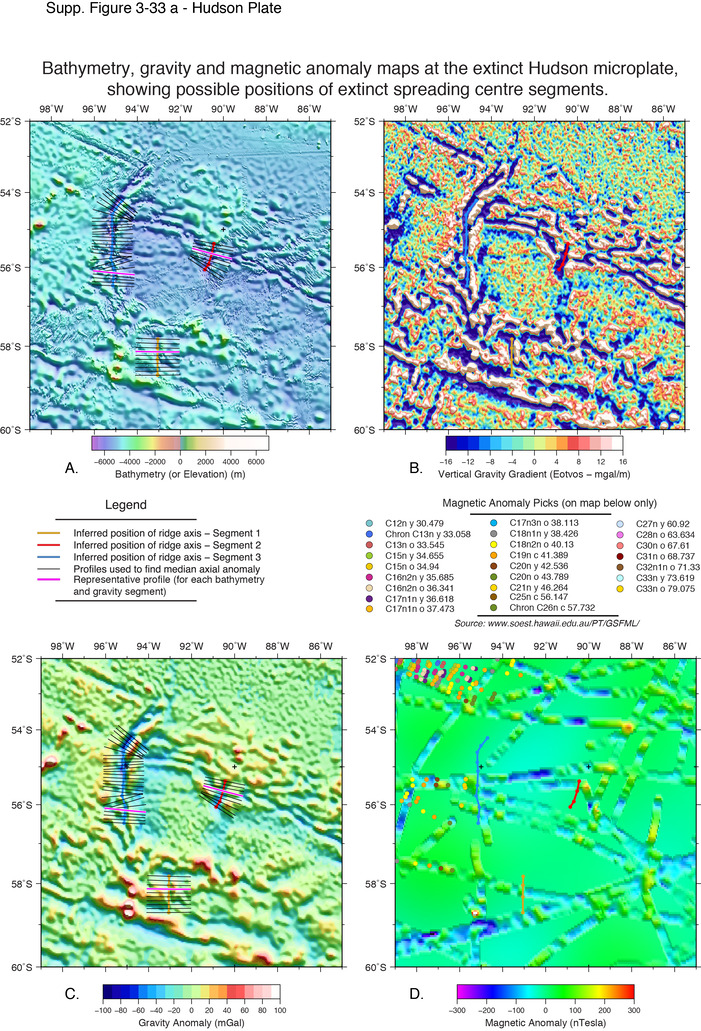| Ocean: | Pacific |
| Spreading center type: | (?) Microplate spreading ridge |
| Time of cessation: | 48 Ma, chron C21 (Cande et al., 1982) |
Several studies have suggested that there is a region of captured crust in the vicinity of the Hudson fracture zone in the southeast Pacific, that may have been formed from a microplate spreading centre (Cande et al., 1982; Eagles et al., 2004; Mayes, et al., 1990). On the basis of the trend of magnetic lineations and the age of the crust between the Menard and Heezen fracture zones to the north and south respectively and between 80 and 95° W, it has been inferred that the crust in this region formed at the boundary of the Pacific and Aluk plates, but later captured by the Antarctic Plate, when the plate boundary moved to the south and east (Cande et al., 1982). Cande et al. (1982) propose that a northward propagating ridge segment, bounded by the Hudson and Henry troughs, intruding into the (older) crust formed during chron C27, at the time of anomaly C21, as a result of eastwards propagation of the Antarctic-Pacific plate boundary. The Hudson Trough is reported to mark the boundary of a northward propagating segment that led to the capture of the Hudson plate crust (Cande et al., 1982), and may represent the extinct axis of spreading.
Cande, S.C., Herron, E.M. and Hall, B.R., 1982, The early Cenozoic tectonic history of the southeast Pacific. Earth and Planetary Science Letters, v. 57, p. 63–74.
Eagles, G., Gohl, K., Larter, R. D., 2004. High-resolution animated tectonic reconstruction of the South Pacific and West Antarctic Margin. Geochemistry, Geophysics, Geosystems, v. 5, no. 7, doi: 10.1029/2003GC000657.
Mayes, C. I., Lawver, L. A. and Sandwell, D. T., 1990, Tectonic history and new iochron chart of the South Pacific. Journal of Geophysical Research, v. 95, no. B5, p. 8543-8567.


